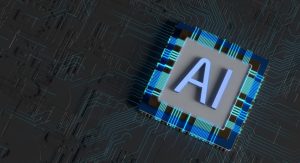
Quantum AI Explained: Where Quantum Physics Meets Intelligent Machines?
Where Quantum Physics Meets Intelligent Machines?
1. Quantum Computing: Uncertainty, On Purpose
Let’s start where it all begins. Quantum computing isn’t “the future” it’s a bizarre present trying to make sense of itself. No one working in quantum needs a hype man. What they need is insulation, time, and a working refrigerator that dips below 15 millikelvin.

Quantum bits qubits, aren’t just bits with a degree. They don’t behave. They exist in a probabilistic haze, and when you try to pin them down, they collapse. Decoherence isn’t a metaphor, it’s a threat.
The machines themselves? Mostly prototypes. Good for small, fragile computations. Not yet world-beaters. But they are the canvas upon which the entire premise of https://quantumai.co is being painted. Not with confidence, but with curiosity.
These machines don’t just offer speed—they offer a different way of asking questions. And for Quantum AI, that’s the point. It’s not about solving the problems faster. It’s about solving the ones we couldn’t even phrase properly before.
2. AI With a Quantum Hangover
Now let’s add AI to this swirling mess. Artificial intelligence, as it stands, is a master pattern-finder pretending to be a philosopher. Give it structured data, and it finds the trend. Give it unstructured noise, and it hallucinates.
Quantum machine learning (QML) doesn’t fix that. It just opens up a stranger landscape to explore. Suddenly, your data isn’t just in three dimensions, it’s in something like twenty, curved around itself, and written in chalk on a foggy mirror.
Much of QML relies on variational quantum circuits, which involve guessing solutions, testing them on real quantum processors, then adjusting. It’s slow. It’s jittery.
But it’s what we’ve got. Platforms like Cirq and PennyLane are putting tools in the hands of researchers trying to coax insights out of entangled systems.
We’re not dealing with “smart” systems. We’re not even at “functional” yet. But in Quantum AI, the potential isn’t hypothetical it’s technical. It’s about capacity. Not consciousness.
3. Trading on Uncertainty: Quantum AI in Finance
This is where the suits show up. Financial institutions see Quantum AI like sharks see blood only they don’t mind if it’s their own. Markets are noise. They thrive on volatility. Quantum systems, inherently probabilistic, speak that language natively.
Quantum-enhanced Monte Carlo simulations are being explored for pricing derivatives.
Portfolio optimisation algorithms are being re-tooled for hybrid quantum-classical approaches. It’s less about better predictions and more about better probabilistic reasoning.
But make no mistake, quantum finance is in pilot mode. Traders aren’t plugging quantum hardware into Bloomberg terminals. Most of what’s happening exists inside notebooks and academic papers, not bank vaults.
That said, if Quantum AI ever proves its edge in this domain, the shift will be fast and ruthless. Finance doesn’t wait for peer review. It moves when there’s even the faintest smell of advantage.
4. The Scaling Problem: Where Dreams Go to Die (for Now)?

It’s not the theories that are failing. It’s the hardware. Scaling up quantum systems is a slog through physics, logistics, and budget committees. There’s no Moore’s Law for qubits. Each one you add risks tanking your entire setup.
And Quantum AI? It’s hungry. You can’t run meaningful models on two or three qubits. You need depth. You need reliability. And until you get both, you’re basically spinning plates with boxing gloves on.
Error correction is one of the key unsolved puzzles. Current machines are noisy hence the acronym “NISQ” (Noisy Intermediate-Scale Quantum). There’s a plan for fault-tolerant machines, but that’s a decade-long trek.
For now, Quantum AI lives in a hybrid space: classical processors handle most of the logic, quantum processors get called in like weird consultants only when things get tricky. It’s not elegant, but it’s honest.
5. The Quiet Wins: Where Quantum AI Starts to Matter?
Strip away the noise, the funding buzzwords, the TED Talk delusions and you find a few areas where Quantum AI is genuinely useful. Quantum chemistry. Materials science. High-dimensional classification tasks.
In molecular modelling, quantum systems can do what classical ones can’t: simulate the very nature of electron interactions. That’s not a party trick that’s the foundation for new drugs, new materials, and (if you’re lucky) fewer side effects.
Then there’s the idea of quantum-enhanced kernels. Not magic. Just better mapping of data into abstract spaces where structure is easier to spot. A smarter lens, not a smarter camera.
This is where Quantum AI earns its keep. Not on stage. Not in headlines. But in the background where things are measured, validated, and hard to fake.
FAQ: Quantum AI Without the BS
Is Quantum AI already delivering value?
In very narrow domains, yes. Mostly research, chemistry, and theoretical finance. The rest is still taking shape.
Can anyone build with Quantum AI?
If you’ve got a background in quantum computing and machine learning maybe. Otherwise, expect a steep, icy climb.
How does it actually work?
It depends. Some models run entirely on quantum processors; others use quantum components inside larger classical architectures. It’s not one-size-fits-all.
Is this mostly hype?
No, but it’s surrounded by a lot of it. Quantum AI has promise, but real-world use cases are still scarce and fragile.
Should I care about Quantum AI now, or later?
If you’re in research, finance, logistics, or drug development—start caring now. For everyone else? Keep an eye out. This story is far from over.





